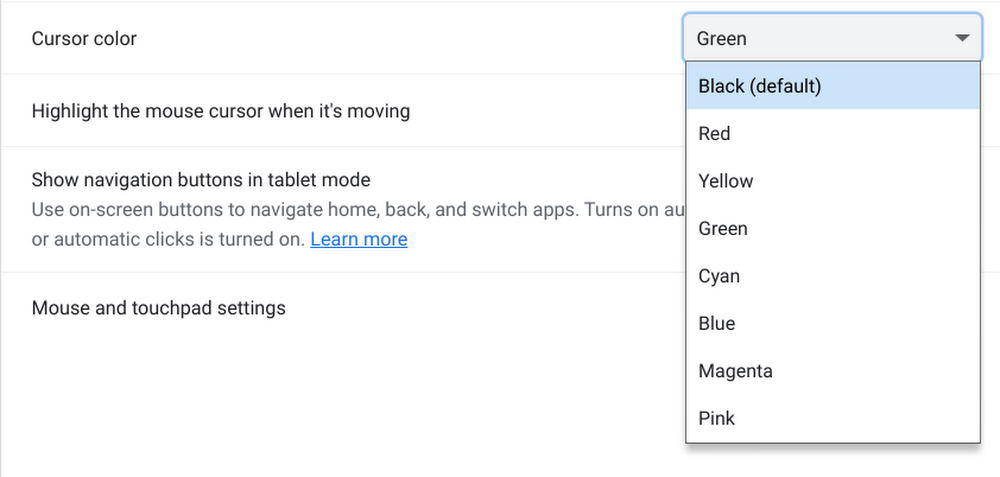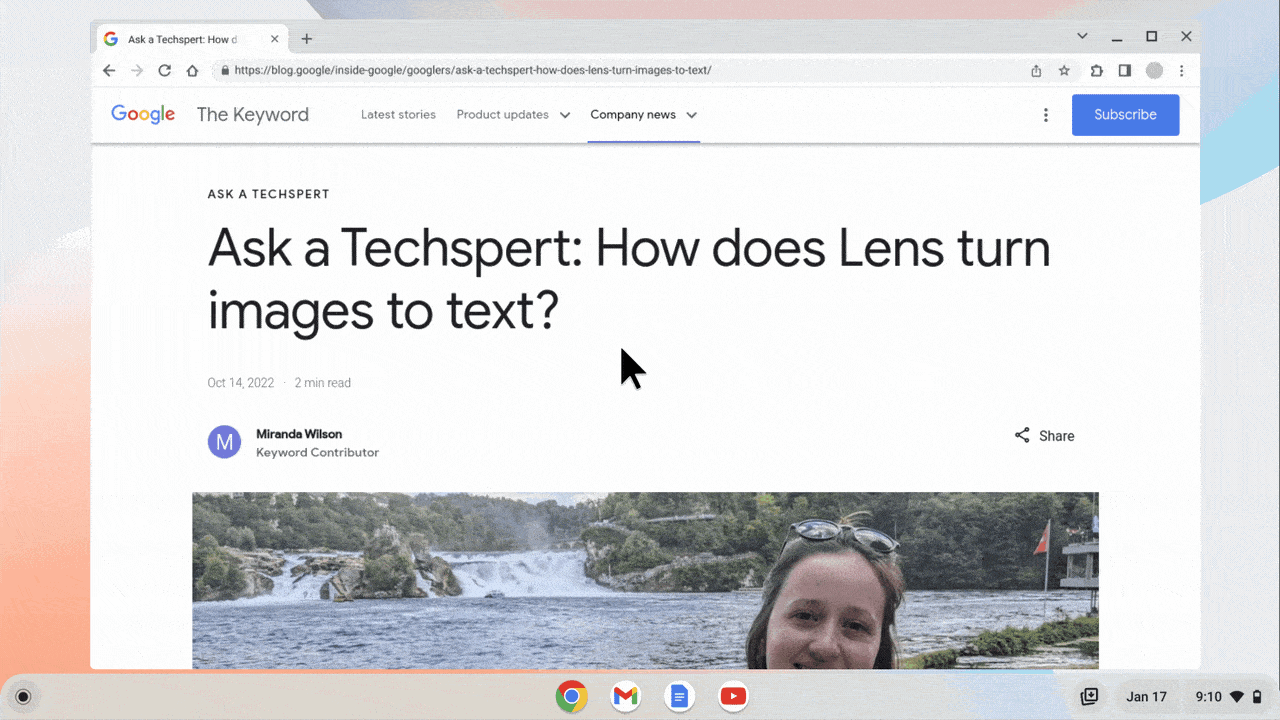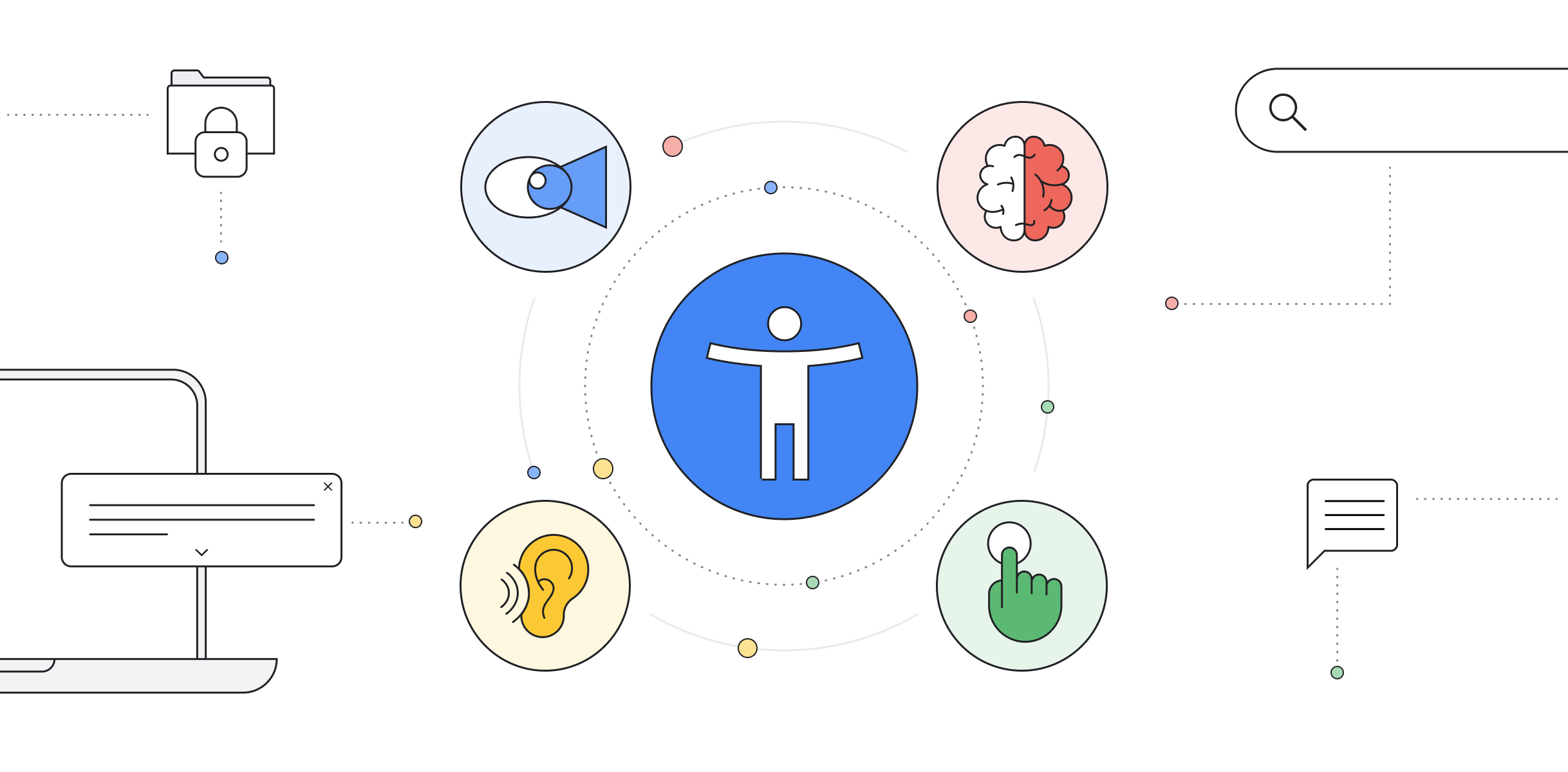Did you know that 1 in 6 people, roughly 16% of the world’s population, has some form of a disability? At Google, we want to make sure we’re building for everyone, all 8 billion people, which means making our products as inclusive as possible. This ties directly to our mission of organizing the world’s information and making it universally accessible and useful. Our roles are specifically focused on making Chrome and ChromeOS inclusive for all of our users – whether that’s for employees, students, or folks using our products day-to-day.
In honor of Global Accessibility Awareness Day, we wanted to highlight some of the key features you and your teams should know about. By enabling your workforce with the best of Google technology, there’s no limit to what they can get done.
Supporting employees who are low vision or blind
Magnifiers are super helpful for those who have low vision. With Chrome, you can use either a full screen magnifier that zooms x20 times for a closer look at text and images or a docked magnifier that magnifies just the top third of your screen.
One of our favorite features is changing the cursor color to improve visibility on ChromeOS. There are seven colors available: red, yellow, green, cyan, blue, magenta and pink, in addition to default black. To change the cursor, go to the “Mouse and touchpad” section of Settings.

Another great feature is high contrast mode which allows users to change or invert the color scheme to make web pages easier to read.
Helping employees read and understand text
Reading mode is a new customizable reader view coming to the Chrome side panel later this year. It removes distracting elements on the screen, like images and videos, to help you focus on a page’s primary content. Users can also customize settings like the typeface, font size and spacing, text and background color.

ChromeVox screen reader is a really popular feature for ChromeOS. Employees can use Voice Switching which automatically changes the screen reader’s voice based on the language of the text being read. To start using the screen reader, check out this help center article. If you’re on a Chromebook, you can even try out this feature now!
We’re also helping employees get to their destinations faster. When you type a website into the Chrome address bar, it will now detect URL typos and suggest websites based on the corrections. This will help employees with dyslexia, language learners, and anyone who makes typos get to previously visited websites despite spelling errors. This feature is now available on Chrome desktop and will roll out to mobile in the coming months.
Empowering employees who are deaf or hard of hearing
Another useful feature is Live Captions through Chrome which displays the speaker’s words in real-time at the bottom of the screen. Fun fact – in 2009, Google introduced machine-generated, automatic captions on YouTube (using AI) – a combination of Google’s automatic speech recognition technology and the previous YouTube caption system. You can also use Live Captions in Google Slides and Google Meet.

For any users who may have limited hearing in one ear, there’s a Mono Audio option on ChromeOS devices to play the same sound through both speakers. Chromebooks also support the latest standards for video closed captions.
Assisting users with writing challenges or mobility impairments
Dictation allows users to speak to their Chromebook to enter text in most places where they may otherwise type. This can be helpful for writing emails or documents.
Sticky keys allows users to more easily use keyboard shortcuts by pressing only one key at a time in sequence to activate a keyboard shortcut, instead of having to hold down multiple keys at once. See how to enable this feature here.
Additional resources for enterprise admins
There’s a ton of policies IT admins can take advantage of through the Google Admin console for both Chrome browser and ChromeOS. Some of these policies include: ChromeVox spoken feedback, Select-to-speak, Virtual keyboard, Dictation, Large cursor, and more. Head to the Admin console to enable them in your organization. You can learn more about setting Chrome policies here and ChromeOS policies here.
There are many Chrome extensions that can also help users with disabilities work on the web. Check out this list of accessibility-focused extensions for other tools that can adjust Chrome to meet your users’ unique needs. As an admin, don’t forget you can manage and pre-install extensions of Chrome for your workforce.
To stay updated on accessibility news from our team, check out the Accessibility Help Center. You can also chat with support agents who can help answer questions about using assistive technology and accessibility features at g.co/disabilitysupport.
To discover other benefits that Chrome and ChromeOS can bring to your organization, visit our website. For more accessibility-related news from Google, check out this new blog and for education related updates, check out this blog.
We’re constantly working on more ways to make Chrome and ChromeOS more accessible. Stay tuned to hear more from the team on additional capabilities coming your way!


